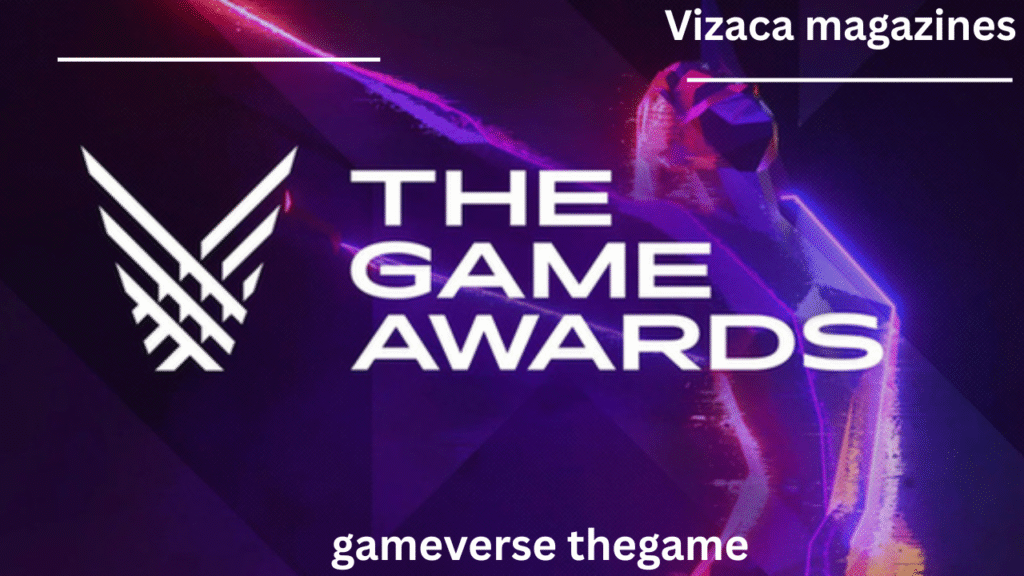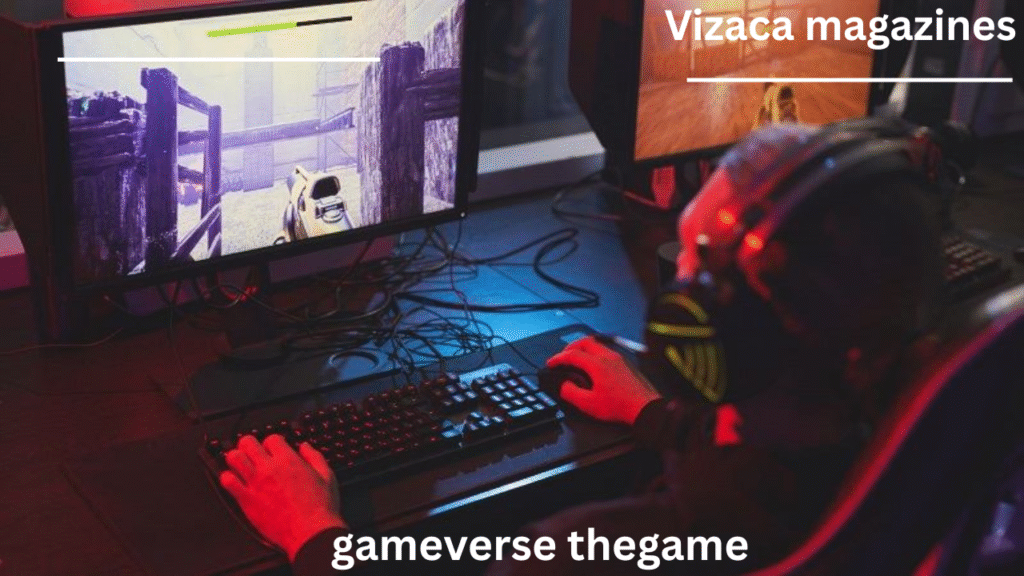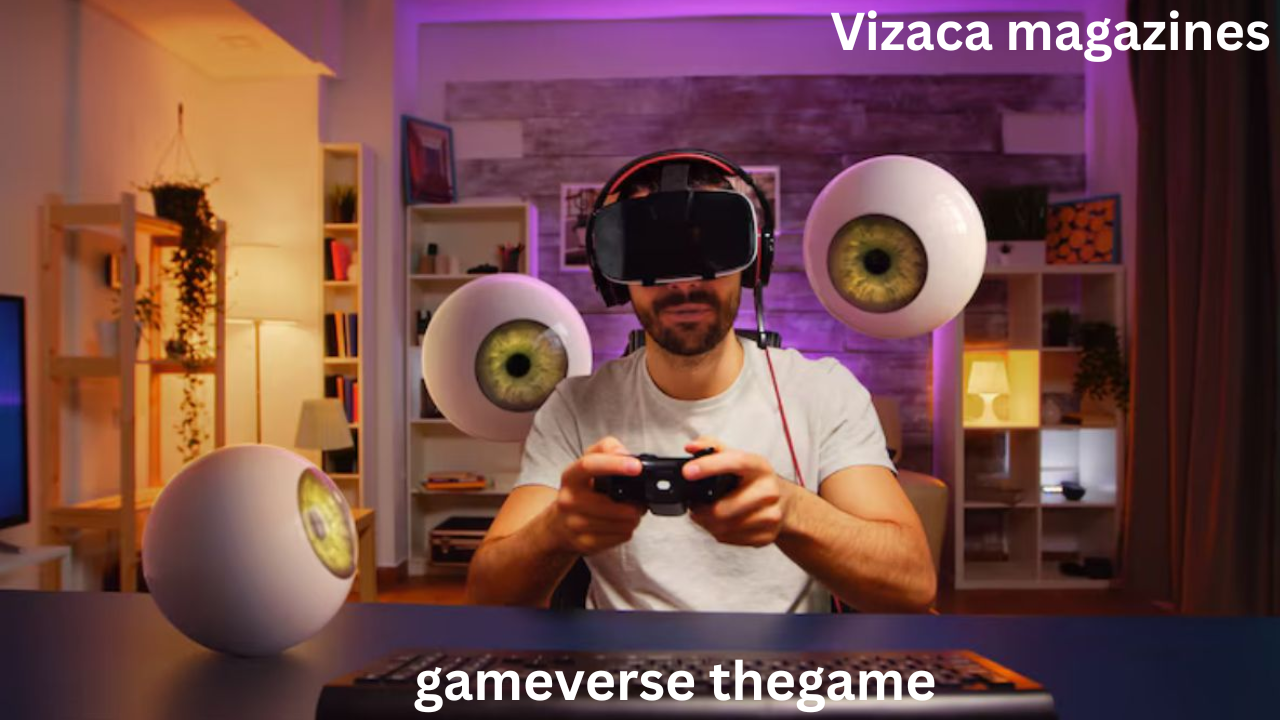Exploring Gameverse TheGame Archives: A Journey Beyond The Standard??
In the evolving landscape of interactive entertainment, gameverse thegame archives emerges as a unique and fascinating dimension. It’s not merely a vault of games or a collection of forgotten classics. It’s a sprawling universe that beckons players, developers, and archivists alike to venture beyond the standard?? and rediscover the essence of gaming history. The concept of archiving within a gameverse goes deeper than documentation—it’s about preservation, exploration, and evolution.
As digital games continue to replace physical copies, the importance of initiatives like gameverse thegame archives grows. These archives hold the DNA of gaming culture, from pixelated pioneers to modern masterpieces. But what truly sets this archive apart is its visionary approach—intertwining storytelling, innovation, and interactive preservatio in ways that redefine what a game archive can be.
The Birth of Gameverse: A Conceptual Shift

The idea of a “gameverse” challenges traditional perceptions of game development and distribution. Instead of viewing games as isolated titles, the gameverse thegame archives treats them as interconnected experiences living within a digital multiverse. This approach allows for thematic, narrative, and mechanical continuity across archived titles, giving users a sense of journey rather than simply accessing a catalog.
This innovation represents a move beyond the standard?? curation models found in most digital libraries. Rather than simply listing titles alphabetically or by release date, gameverse thegame archives integrates games into timelines, clusters, genres, and experiential paths. Users aren’t just browsing—they’re exploring a living museum.
Interactive Archiving: A New Layer of Engagement

Traditional archives are static by nature—text, screenshots, and perhaps videos. But gameverse thegame archives invites interaction. Imagine stepping into a digital hub where each archived game is playable within its original environment, complete with developer notes, player commentary, and alternate endings that were never released publicly.
This method encourages users to engage with history, not just observe it. You can play an early version of a game alongside its remastered counterpart, compare decisions, and even toggle design layers like concept art, audio sketches, or abandoned mechanics. It’s a form of digital archeology, where the tools are code and curiosity.
It’s not simply a vault—it’s a playground for historians and players who are bold enough to go beyond the standard?? when engaging with game history.
Storytelling Through Preservation
At its core, gameverse thegame archives is a storytelling machine. Every title within it holds a narrative, not only in its gameplay but in its creation, reception, and legacy. The archive brings those stories to life with commentary from developers, retrospectives, and curated experiences that string games together by theme, culture, or innovation.
For example, you could trace the evolution of stealth mechanics from pixel-based adventure games to modern photorealistic stealth shooters, all while hearing from the creators who pioneered each leap. This storytelling aspect makes gameverse thegame archives more than a historical tool—it’s a narrative engine guiding us through decades of digital creativity.
This is where the idea of beyond the standard?? becomes philosophical. Instead of merely preserving software, the archive preserves intent. It keeps alive the dreams, conflicts, and breakthroughs behind every game it holds.
Gameverse and the Future of Game Education
There’s a quiet revolution happening in game education, and gameverse thegame archives is at the heart of it. Instructors, students, and independent learners now have access to a repository that doesn’t just show what was done—it shows how and why. It’s one thing to play a classic platformer; it’s another to see its code, read its reviews from the time, and hear directly from its designers.
This learning environment fosters a holistic understanding of game development—combining design, narrative, art, and cultural impact. Instead of linear lessons, learners explore branching knowledge paths through interactive timelines and historical reconstructions.
By supporting dynamic learning and critical thinking, gameverse thegame archives empowers the next generation to build on the past while daring to go beyond the standard?? in their own creative pursuits.
Beyond The Standard??: A New Philosophy of Play
What does it truly mean to go beyond the standard?? in the world of games? In the context of gameverse thegame archives, it means pushing past limitations—technological, creative, or institutional. It’s about breaking the mold of traditional curation and turning an archive into an evolving narrative universe.
This philosophy challenges gatekeeping and embraces the obscure, the experimental, and even the unfinished. Games that never saw full releases, beta builds, prototypes, and fan-made mods all find space within the archive. They’re not just curiosities—they’re part of a bigger story.
In a world where most platforms celebrate polished, market-ready games, gameverse thegame archives celebrates the incomplete and the controversial, proving that even failed experiments have a place in gaming’s evolutionary tree.
Curated Realities: Themes That Bind the Archive
Within gameverse thegame archives, you’ll find thematic curation unlike anything else. Instead of genre filters, you’ll explore collections like “Games That Predicted the Future,” “Lost Worlds and Cancelled Realities,” or “Mechanics Before Their Time.” These curated realities give users a fresh lens to experience old titles and understand their relevance today.
By organizing games around ideas and narratives instead of checkboxes, the archive invites reflection. Why did certain design trends dominate in the early 2000s? What does a cancelled RPG from 1999 say about the industry’s fears and hopes at the time? These themes bring forgotten games back to life and remind us that every pixel had purpose.
This is a storytelling approach to archiving that goes far beyond the standard??, creating a dialogue between the past and present, between developers and players.
Community Integration and Living Archives
Unlike conventional archives, gameverse thegame archives is not frozen in time. It grows, evolves, and responds to its users. Through community submissions, collaborative timelines, and open source contributions, it becomes a living archive. Gamers become curators. Developers become historians. Every voice counts.
This community-centric model invites transparency and engagement. It’s not about gatekeeping knowledge—it’s about sharing it. It’s about revisiting the past not as passive observers, but as active participants who help shape how history is remembered and celebrated.
By fostering this collaborative spirit, gameverse thegame archives sets a new benchmark, again choosing to venture beyond the standard?? in digital preservation.
Conclusion: A Legacy Reimagined
In the end, gameverse thegame archives is more than a technological feat or a nostalgic repository. It is a reimagined legacy—a dynamic, interactive, and inclusive space that dares to document gaming history with heart, insight, and innovation.
By going beyond the standard??, the archive challenges everything we thought we knew about game preservation. It blurs the line between play and study, between past and future. It honors not only the games that made it big but also the ones that whispered something revolutionary before vanishing.
Whether you’re a developer, gamer, historian, or dreamer, gameverse thegame archives offers you a key—not to a vault, but to a universe waiting to be rediscovered.
FAQs
1. What is Gameverse TheGame Archives?
Gameverse TheGame Archives is an interactive digital archive that preserves and presents video games as part of a dynamic and thematic digital universe, rather than as isolated titles.
2. What does “Beyond The Standard??” mean in this context?
It refers to the archive’s approach to go beyond traditional archiving methods—embracing narrative-driven curation, community involvement, and the inclusion of experimental or unfinished works.
3. How is this different from traditional game libraries?
Unlike typical libraries, Gameverse TheGame Archives allows interactive exploration, contextual storytelling, and real-time engagement with historical versions, design notes, and player experiences.
4. Who can contribute to Gameverse TheGame Archives?
Both developers and gamers can contribute through community tools, shared timelines, commentary, and data curation, making it a collaborative and evolving platform.
5. Is this archive focused on retro games only?
No. While it honors retro titles, Gameverse TheGame Archives also includes modern games, experimental projects, cancelled titles, and more—anything that contributes to the broader narrative of game history.
Read More: The Enigma of Christina Erika Carandini Lee: A Life of Legacy, ??, and Influence





